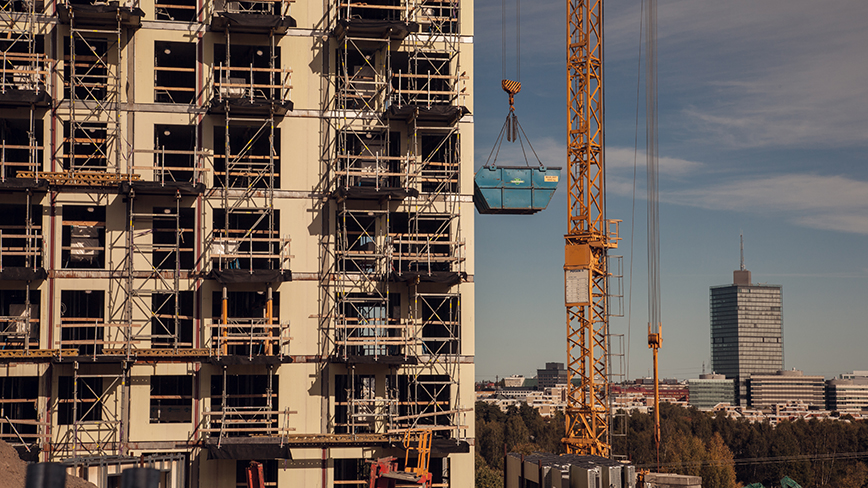Total climate impact of properties in focus in new study

The building stock has a significant long-term climate impact. Researchers at KTH Royal Institute of Technology have observed this when investigating the climate impact of recently constructed residences in Hammarby Sjöstad, Stockholm. They discovered that some properties are associated with 50 percent more emissions than others.
Now, researchers want to change how the climate impact of the building stock is evaluated throughout their lifetime, both in connection with new construction and existing operations.
"We want to shift the focus from just looking at the climate impact of the operation of building stock today, where changes in the stock over time are not considered. Among other things, we want to find tools to integrate how the climate impact looks during renovations and whether it is demolished and rebuilt," says Tove Malmqvist Stigell, a senior researcher at KTH.
Focus in Järva
The project, Carbon budgeting including: built environment and private consumption, will focus on residential areas in the Järva area of Stockholm , where many of the buildings were constructed during the million program but where there are plans to build nearly 8,000 new homes in the coming years. By engaging in a dialogue with the various stakeholders involved in properties in Stockholm, the researchers hope to find a model for calculating the climate footprint of an entire property portfolio over time.
Today, there is a law on the climate declaration of buildings , but the purpose of that law is to reduce climate impact when a building is constructed. During a building's lifetime, many other factors also influence it, from the heating system to the climate impact of renovation, how a window replacement affects it, and whether it is more climate-friendly to demolish and build anew.
"It is important to look at the overall climate impact, both in new construction and in existing buildings, and link it to decision-making. So far, there has been a strong focus on emissions from operational energy, but the other aspects are equally important. We want to create a life-cycle perspective," says Oleksii Pasichnyi, a researcher at KTH.

Easier to see effect
By creating calculation models based on existing data, the researchers aim to provide a model with a set of embedded choices, making it easier to see the effect of different choices in the decision-making process. Through the model, the researchers hope to connect it to the Järva area to understand better the combined impact of the various components, something that can then be applied in any area in Stockholm.
"In the beginning, it is important to understand who makes the various decisions and what indicators they use to understand what is better or worse in different choices made. Our goal is to create a more systemic perspective on buildings, whether existing stock or new construction," says Malmqvist Stigell.
Related news

Total climate impact of properties in focus in new study
The building stock has a significant long-term climate impact. Researchers at KTH Royal Institute of Technology have observed this when investigating the climate impact of recently constructed residen...
Read the article
